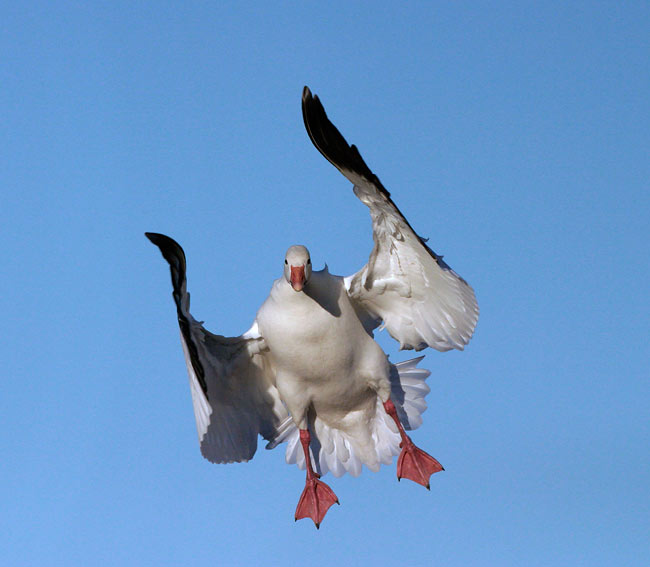
Canon 500mm f/4 L IS lens with Canon EOS 10D camera body. AI Servo AF/7 sensors activated. ISO 400. Evaluative metering -2/3 stop off of the bird in the blue sky, set manually: 1/3200 at f/8.

Handheld Canon 100-400mm IS Zoom lens at 400mm with Canon EOS 10D camera body. AI Servo AF/7 sensors activated. ISO 100. Evaluative metering +2/3 stop: 1/20 sec. at f/6.3.
As Bosque remains the premier teaching laboratory for those wishing to perfect their flight photography techniques and expand their creative vision, I have set the dates for the two 2004 Bosque IPTs and made reservations at the incredibly convenient and super-eco-tourist friendly Super 8 Motel (505-864-4626). This will be the tenth straight year that I have visited Bosque around Thanksgiving time since losing my wife Elaine to breast cancer on November 20, 1994. At present, Digital and Photoshop expert Ellen Anon is scheduled to join me as co-leader. Here are the details:
Manuel
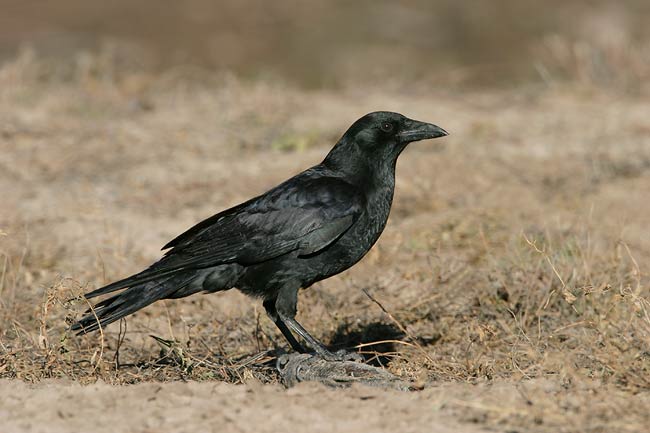
Image copyright 2003 Arthur Morris/BIRDS AS ART
Canon 500mm f/4L IS lens (on Lesco Beanbag) with 1.4X TC and EOS 10D camera body. AI Servo AF. ISO 200.
Evaluative metering -1/3 stop: 1/500 sec. at f/10.
It is safe to say that the 10D, with its 1.6X multiplier effect, has, and will continue to open up new world's for countless numbers of bird photographers. And while some folks deride the multiplier effect as voodoo or myth, the simple fact is that you have a given effective focal length and a given number of pixels; the multiplier effect is real. So what's the big deal? When combined with any of Canon's intermediate telephoto lenses (see a comparison at: http://www.birdsasart.com/bn117.htm) nature photographers who previously could not afford big glass are back in the game. For example, the 10D and the 300mm f/4 L lenses yield an effective focal length of 480 mm, and an effective focal length of 672mm with the 1.4X teleconverter (with all 7 AF points available). And this rig--even with the 1.4X TC--is easily hand-holdable. With either the 400mm f/5.6L lens or the 100-400mm IS L lens, the 10D yields a maximum effective focal length of 640mm, or 896mm with the 1.4X TC. In the latter cases, the use of a tripod is mandatory as you will be focusing manually.
The 7-point autofocus system may very well be Canon's most accurate AF system for tracking birds in flight, especially those flying directly at you. When I used the 10D for flight photography at Bosque recently with the 500mm f/4L IS lens, I activated all seven AF points. The system performed almost flawlessly, acquiring focus quickly (but not as quickly as the 1D). The 10D was able to maintain focus when the bird dropped below the horizon and the system did not search for the mountains, the trees, or the cornfields in the background... And more importantly, nearly every single image was razor sharp on the eye! I was most impressed. The effective focal length of the 10D/500mm lens combination is 800mm and gives flight photographers an added advantage: at a given image size, birds in flight are moving more slowly through the viewfinder of a 10D than through the viewfinder of cameras with lesser or no multiplier effect because their flight speed relative to the photographer's position is slower. It is, therefore, easier to pan and track the birds in flight. The same is true when using any of the previously mentioned handhold-able telephoto lens for flight photography...
When used with the 500mm or 600mm Canon lenses and the 1.4X II TC, the 10D allows you to stay away from the 2X II TC. Do the math. With the 1Ds, the 600mm lens, and the 2X II TC, the effective focal length is 1200mm. With the 10D and the 1.4X II TC, the effective focal length of the 600mm lens is 1344mm! And you will have an image with 6.29 million pixels and, at the same time, you will have all 7 AF points available. For those with good eyesight who are able to manually focus the lenses with the 2X TCs accurately, the numbers are staggering with effective focal lengths of 1600mm for the 500mm and 1920mm for the 600mm! Thus, the 10D makes an excellent back-up body for both 1D and 1Ds users, and in addition, its light weight and accurate AF system makes it ideal for use with the auxiliary flight lens that hangs from the shoulder of many of those toting long, tripod-mounted telephotos into the field.
.....
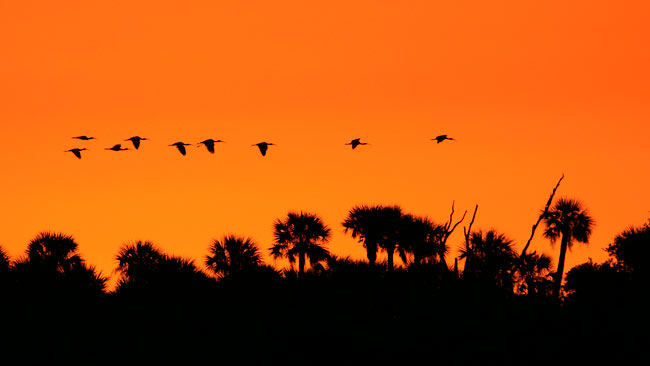
The 10D's CMOS sensor is not the dust magnet that the sensors in the high end bodies are, in fact, I have not noticed a single dust-bunny on any of my 10D images despite the dry, dusty conditions at Bosque. The 10D has an LCD light that made working in the predawn darkness a snap, and the raw plus j-peg capability that I use and recommend. There are lots of other impressive technical specs that you can learn about from the photo magazines or the Canon web site, but to me, the proof is in the images... Jeez, I almost forgot to mention the price, about $1400 street. This amazing camera represents an incredible value when you consider the opening price of the D-30: $3000+!
The 10D has a really neat pop up flash that can be useful for photographing birds at close range or--amazingly--when using high ISO settings. The meters on most of the 10Ds that I have come across have been about 1/3 stop lighter than the meters on the 1D and the 1Ds. For those who know how to interpret the histogram this is not a problem at all, but it does cause some confusion when you are using two cameras that require different exposure compensations for the same scene.
On the negative side are the too-slow flash synch speed (1/200 sec.), the relatively slow 3 fps, and the relatively slow write-to-buffer speed that can be a real pain if you fire off a burst of images... Also bothersome is the fact that the highlight alert feature is only viewable on the tiny image that appears alongside the histogram; it would be much better if it appeared on the full sized image on the rear LCD screen... All in all, I love my 10D, was most impressed with it's AF capabilities, and look forward to using on a regular basis. (I do plan to add the vertical grip.)
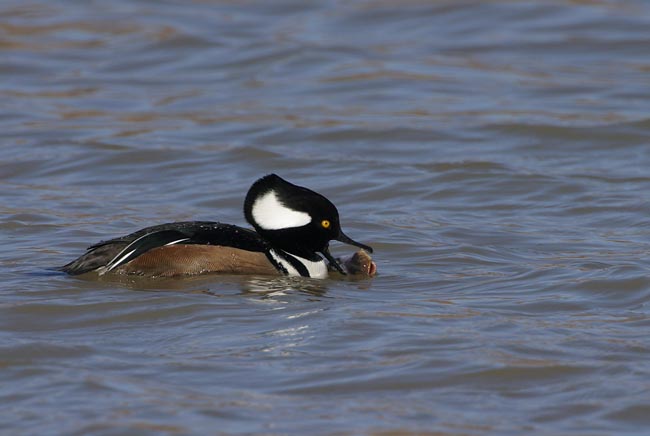
Image copyright 2003 Arthur Morris/BIRDS AS ART
Tripod-mounted Canon 500mm f/4 L IS lens with 2X II TC and Canon EOS 10D camera body. Manual Focus. ISO 400. Evaluative metering -1/3 stop: 1/800 sec. at f/13.
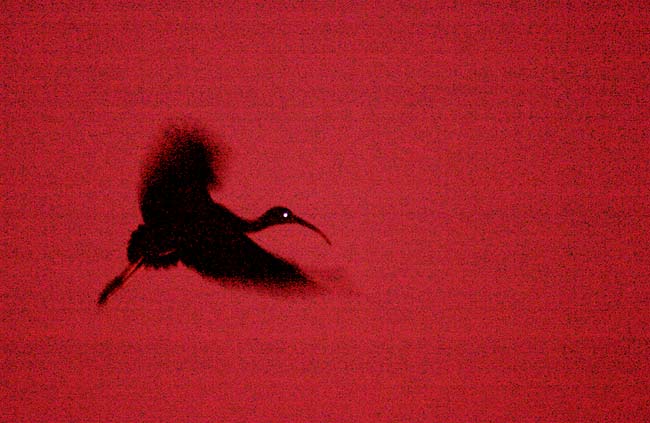
Photo Illustration copyright 2003 Arthur Morris/BIRDS AS ART
Handheld Canon 100-400 mm zoom lens at 400 mm and EOS 10D camera body. AI Servo AF (in the dark!)
ISO 3200. Evaluative metering +2 stops: 1/60 sec. at f/5.6. Pop-up flash at zero.
Though true to the original image in terms of compositional elements, I consider this a photo illustration because the sky in the original image was a fairly dark gray. In Hue/Saturation I boosted the yellow, the red, and the magenta channels to 100%. Though the subject was well more than 100 feet from my position, the flash lit up the bird's eye rather mysteriously. I love to "play" with my digital cameras, pushing the creative envelope more and more as I do so...
Artie
Note: Arthur Morris has been a Canon contract photographer since 1994 and continues in that role today. Hunt's Photo of Boston, MA is a BIRDS AS ART sponsor, as is Delkin Devices. Do feel free to forward this Bulletin to one or more photographer-friends. Those wishing to subscribe click here mailto:http://birdsasart.us1.list-manage.com/subscribe?u=94ad23bd96f48a1de2ca612b3&id=bdb4a511a0?subject=subscribesubject=subscribe If you received this bulletin in error, or would like your name removed from the subscriber list click here birdsasart@verizon.net?subject=unsubscribe Back issues of relevant Bulletins are archived on the web site at: http://www.birdsasart.com/bn.html